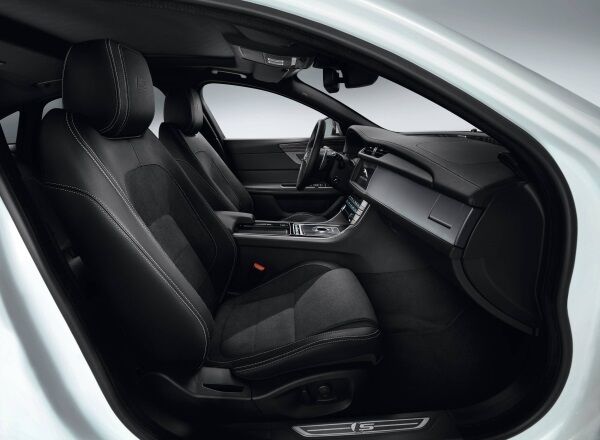Jaguar XF: Unlike the UK, JLR makes the right move

Those puzzled carmakers are also undoubted nonplussed by the concomitant and expected ‘glory to independence’ cant from those who lied through their teeth to secure the victory, without any regard for those whose money is responsible for so many UK jobs, or indeed the fate of the workers themselves.
A remarkably strong UK motor industry, which last year posted a turnover of £76.1bn and boasted employment of 814,000 jobs, of which 169,000 are employed directly in the manufacture of cars, is now in dread of having no access to the EU’s single market.
Indeed, just this week the UK’s Society of Motor Manufacturers and Traders (SMMT) was frantically trying to lobby the government to maintain Britain’s free trade deal with the EU. It is just one of many similar trade organisations trying to ensure that pre-vote trading conditions remain in place.
With the Financial Times reporting that both Nissan and Toyota are considering the future of their UK plants, there is distinct unease around the British motor industry.
While I wish Mr Hawes and his ilk the best of luck with his lobbying, I would caution that the vagueness and insecurity which appears to have settled upon Britain over what the future holds has now enveloped the corridors of power and created a vacuum which could yet choke all political and administrative function, leaving the likes of SMMT to fend for themselves. These are very unsettling times indeed.
Over at Jaguar Land Rover (JLR), which has been one of the recent — and massive — success stories of the British motor industry since being bought from Ford by giant Indian conglomerate Tata, fears are growing among the 40,000-plus workforce that the new JLR plant in Slovakia might be needed by the company to exploit tariff-free selling into European markets, leaving its British operations vulnerable.
This must be a crushing prospect for the JLR workforce, having worked so hard to re-establish the Jaguar and Land Rover brands as premium sellers competing against the best the Germans have to offer. It is pertinent therefore that this week we test the face-lifted XF, particularly as it was the model which kickstarted JLR’s regeneration.
Unveiled in 2008 and in production until late last year, the XF was a tour de force which was backed every step of the way by critics and the buying public and it played a critical role in re-establishing Jaguar as a coherent and viable manufacturer. It took Jaguar back from the brink of the nightmare days when Ford insisted on Mondeo underpinnings for the X-Type — with predictably disastrous consequences — and laid the foundations for more success stories.
The original XF was not only a treat to look at, but brilliant to drive too and the plan for the face-lifted version was to continue the ascent to greatness. I am very comfortable in saying that the company has achieved those aims.
Although the look of the car has not been tricked with too much — there have been slight detailing changes to the likes of the grille, light clusters, and other bits and bobs, but the essential clean, vibrant look of the original has been maintained. It is under the skin that much has been altered.
The chassis is now predominantly made from aluminium rather than the steel of the old one and that has made it both lighter and more rigid, as well as allowing the designers accommodate an extra 51mm within the wheelbase. The engine line-up is all new as well with the primary powerplant being the new two-litre Ingenium range with 161 and 178 bhp outputs on offer.

As I’ve mentioned before about these engines, there is a noticeable lack of refinement on offer here, especially when starting from cold. Now I would have to qualify that remarks of such a trait is commonplace pretty much in all such four-cylinder diesel engines and is not solely a Jaguar thing. It does ease considerably when operating temperature is attained, but it is slightly alarming when first encountered.
That said, the engine is a very willing companion when asked questions and, allied to the eight-speed ZF automatic box, will hardly disappoint in any aspect of performance — be it outright pace or economy.
On the inside there have been other modifications, the majority of which are aimed at making the car even more upmarket than before and while characteristics such as the peek-a-boo air vents and the gear selector bezel remain, the whole thing now exudes more class than before thanks to higher grade materials and plastics throughout. Added spaciousness, especially for rear seat occupants, is also welcome.
On the road the previously excellent driving traits have been further honed and the XF is closer to rivals such as the E-Class Merc and the 5-Series Beemer with regard to on-road behaviour.
Independent all-round suspensions, rear drive and 50-50 weight distribution deliver the sort of handling that is demanded by people that actually drive cars. Jaguar has produced a car which does not appear to have any flaws in ride, handling or verve.
Mention also has to be made of the electric power steering system which, unlike many other such systems, is both quick and accurate, providing the driver with excellent feedback as to what the tyres are actually doing at any given moment.
One other thing worth noting is that those buyers who opt for the entry level model will not find themselves as short-changed as they might if they purchased a German competitor. Specification levels are top drawer from the outset and moving up a grade or two is not horrendously painful monetarily.
A move forward, therefore? Most certainly. And what we see here is the sort of progression that has characterised JLR’s modus operandi since Tata took over. The only hope is that all their good work will not be unravelled by the result of last week’s UK plebiscite.
JAGUAR XF
????
COLLEY’S VERDICT
From €45,995 — €49,280 as tested.
Not the most refined diesel on the market, but a solid performer nonetheless.
Excellent entry-level kit levels defy German rivals.
A distinct step forward from what was already an excellent car.





